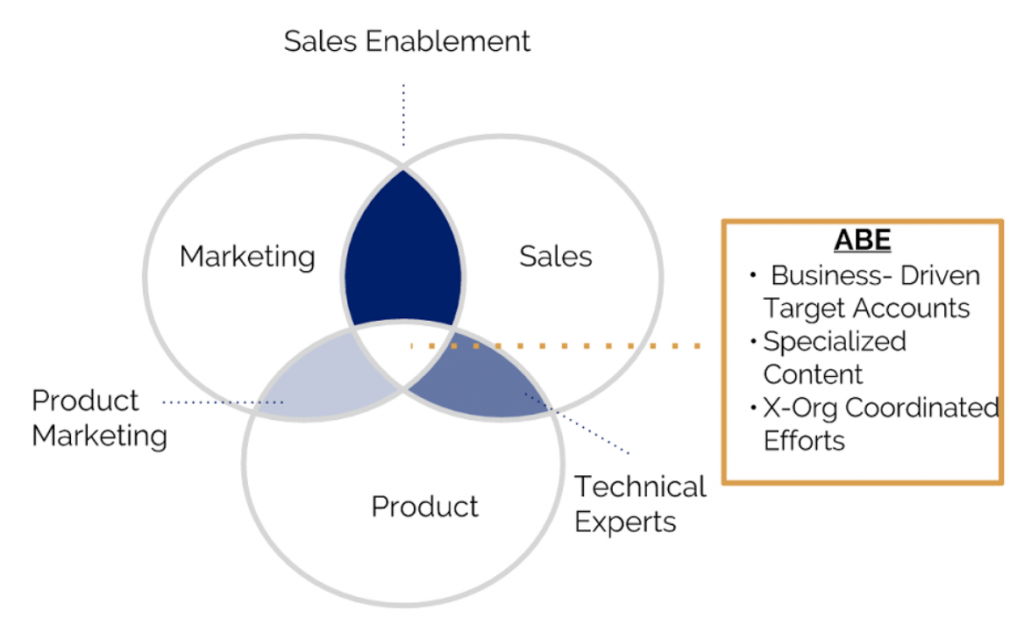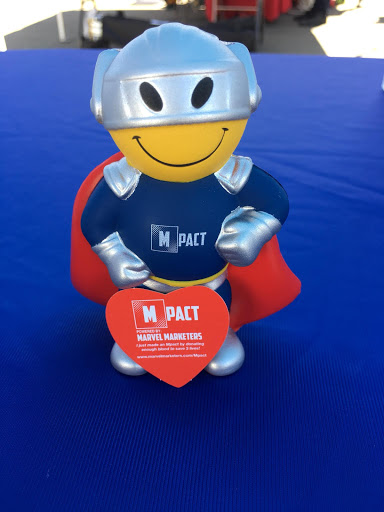Account Based Marketing (ABM) seems to be on the tip of everyone’s tongue lately. Much like Content Marketing was the proverbial “It Girl” 5 years ago, ABM (again like content marketing) isn’t a new thing, rather it’s how we as marketers are choosing to approach this topic that is making it buzzworthy.
Copyright of your Sales Team
Sales have always had their “elephants”–the big accounts that, if closed, mean a career-distinguishing win. But now it’s not just sales targeting these large prizes; it’s marketing too. However having too many cooks in the kitchen looks unorganized and can do more harm than good when it comes to communicating with a high-profile lead. Enter modern day ABM–a marketing AND sales-centric strategy designed to coordinate all communication efforts into a unified, branded approach.
It is this new philosophy that has spawned Account Based Everything (ABE)–the idea that not just sales and marketing need to be aligned, but the entire company. ABE aims to meet the needs of businesses looking for stronger engagement with their target accounts in a complete, complex and measurably effective way.
R.I.P. Lead Gen?
ABE is not a replacement for lead gen, but rather a supplement to preexisting marketing and lead gen efforts. Think of incorporating ABM into your marketing plans as your offense–a team to be tagged in after your defense (traditional nurtures) have run their plays. You are now intermixing aggressive plays with your passive ones, and both are needed to win the game.
Lead gen is still imperative to a marketing plan as it focuses on bringing in new leads, whether they qualify for ABM or not. In essence, they bring in the individual folks who are curious about your business, are researching competing vendors or are actively looking for a solution to their immediate problems. You court them with ebooks, webinars, and other thought leadership pieces in the hopes of a second, third and maybe even fourth date leading to blissful B2B/B2C matrimony.
Remember that this is your passive approach–non-aggressive and better suited to warming leads up than directly telling them to put a ring on it. There will always be a place in marketing and sales for this, and especially in conjunction with ongoing ABM efforts.
Starting your ABE Journey
ABE asks your entire organization–not just your sales team–“Who should we be selling to?”, “What does a qualified customer look like?” and “Who do we want in our portfolio?” Frankly, this is the best use case for the 3 legged stool diagram I’ve seen in years (see awesome graphic below).
Marketing, sales and product teams have to come together and align on messaging, approach and targets for a successful ABM campaign. There is a number of technologies available today that can help you with the coordination requirements of rolling out an ABE campaign.
At the end of the day though, it’s important to make sure that you’re talking to the right person–or rather right account–in the right way and at the right time. This strategy will make your future Account-Based strategy a success no matter what tools you use to get there.





